Ever wondered what are Bitcoins made of? While traditional money has a physical form, coins made of metal, bills made of paper, Bitcoin doesn’t seem to follow the same rules. So what exactly makes up a Bitcoin?
Let’s clear this up right away: Bitcoin has no physical substance. It doesn’t exist as a tangible object like a coin or note. Instead, Bitcoin is a purely digital creation, existing as code on a decentralized network.
This article will help you understand what Bitcoin really is, how it’s created, and whether anything like a physical Bitcoin actually exists.
1. What is Bitcoin?
Bitcoin is a decentralized digital currency that operates without any physical form or central issuing authority. Instead of being printed like dollars or minted like coins, Bitcoin exists solely as data on a globally distributed ledger known as the blockchain.
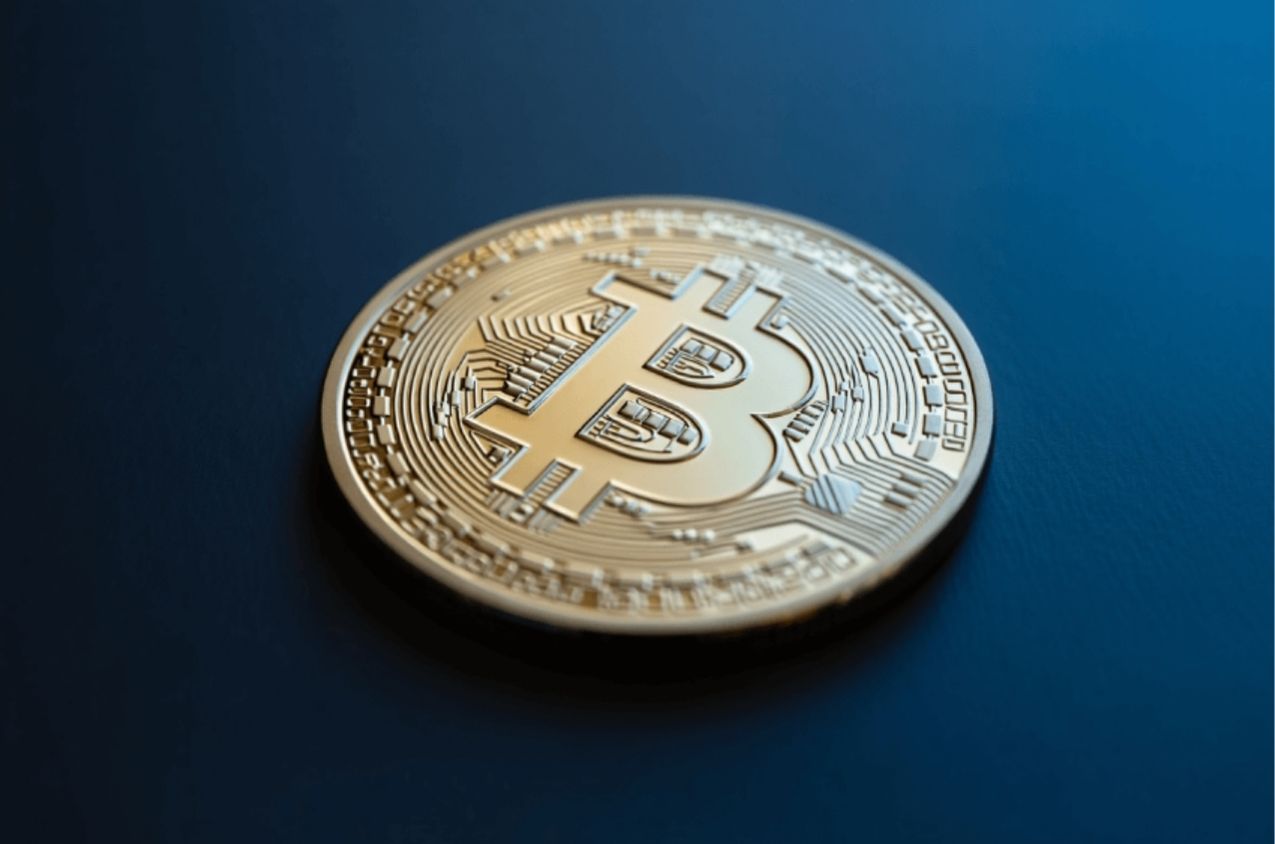
Each Bitcoin represents a unique entry in this blockchain and is secured through cryptographic algorithms. These entries are stored in digital wallets and can be sent or received electronically, much like an email, but for value.
Unlike traditional currencies controlled by governments and central banks, Bitcoin relies on peer-to-peer technology and open-source code to function independently. This means no single person or institution controls it, making it resistant to censorship or manipulation.
The concept was introduced in 2009 by the pseudonymous creator Satoshi Nakamoto, who envisioned a system based on math and trust rather than intermediaries.
Bitcoin isn’t just a form of money, it’s a protocol for decentralized financial sovereignty.
2. Bitcoin: A digital code or a physical coin?
At its core, Bitcoin is a line of computer code, a record on a digital ledger called the blockchain. It doesn’t exist in any physical form and cannot be held in your hand.
Unlike traditional money printed by central banks, Bitcoin is maintained by a network of computers and protected by advanced cryptographic algorithms.
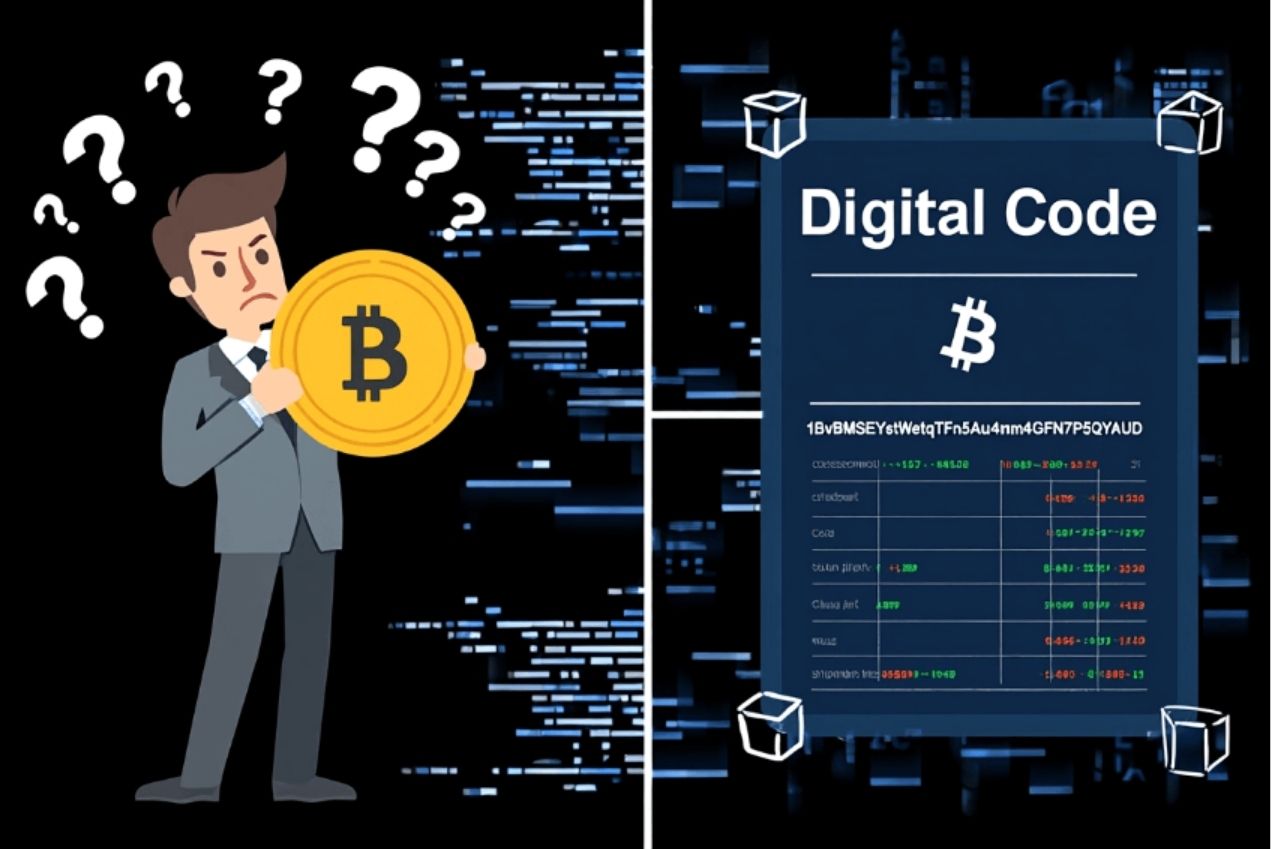
Bitcoin is essentially a digital asset, represented by a unique string of characters associated with a specific wallet address on the blockchain. Each coin is a verified entry in a public ledger, not a physical object.
The blockchain functions as a distributed, transparent database that records all Bitcoin transactions. Every Bitcoin ever minted or recorded on the blockchain exists only as data, created and validated through mathematical processes, not printing presses.
People often mistake the Bitcoin symbol (₿) for a coin, but it’s simply an icon. As the Bitcoin community puts it: There is no such thing as a physical Bitcoin… they aren’t made of anything physical.
Bitcoin is truly decentralized, no government or entity mints it, and no tangible substance backs it. It’s made of cryptographic protocols and the collective trust of its users.
Want to learn more? Check out our related articles:
- How many Bitcoin ETFs are there and what investors should know
- How do you redeem Bitcoins for cash? A step-by-step Guide (2025 US Edition)
- How do I sell my Bitcoins for cash quickly, easily and securely
3. What are Bitcoins made of and how they are created through mining?
So if Bitcoins aren’t printed or minted, how are they made? The answer lies in Bitcoin mining, a process where specialized computers solve complex cryptographic puzzles to validate transactions and secure the network.
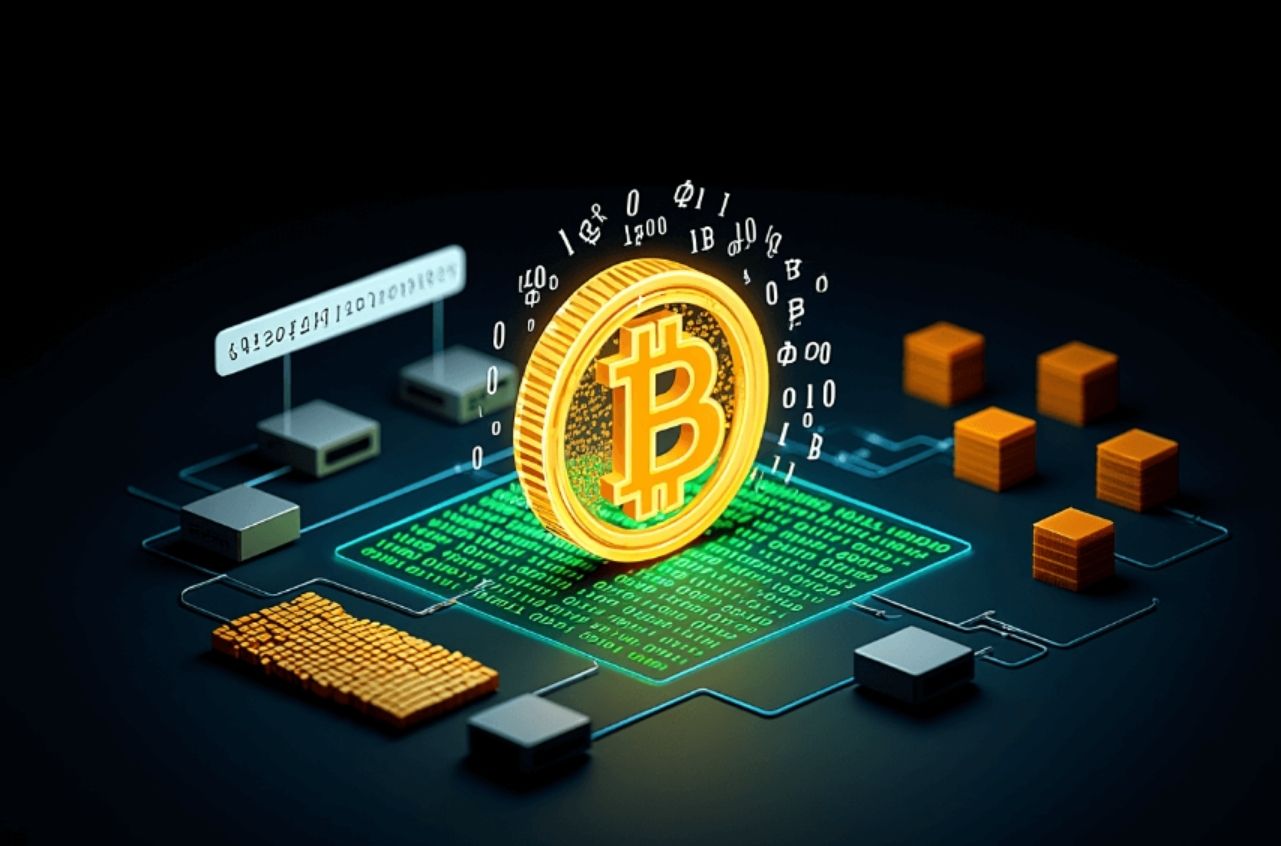
Each time a set of transactions, called a block, is verified, miners receive new Bitcoins as a reward. This is how new Bitcoins are produced. Mining doesn’t involve any physical production; instead, it requires significant computing power and energy.
Bitcoin has a capped supply of 21 million coins, meaning it’s a scarce digital resource. This limit is hardcoded into Bitcoin’s algorithm. As more blocks are mined, the reward halves approximately every four years, making it harder to generate new coins over time.
Mining isn’t just about creating Bitcoin, it also keeps the blockchain secure and decentralized by making it expensive and difficult to manipulate.
3.1. Where are Bitcoins mined or produced?
If you’re unsure how to cash out Bitcoin or redeem it for fiat, understanding mining and wallet systems is key.
Now that we understand the concept of mining, let’s explore where Bitcoin mining actually takes place around the world.
Bitcoins can be mined anywhere in the world with an internet connection and the right equipment, such as ASIC machines. There’s no central location or facility like a mint where Bitcoins are made.
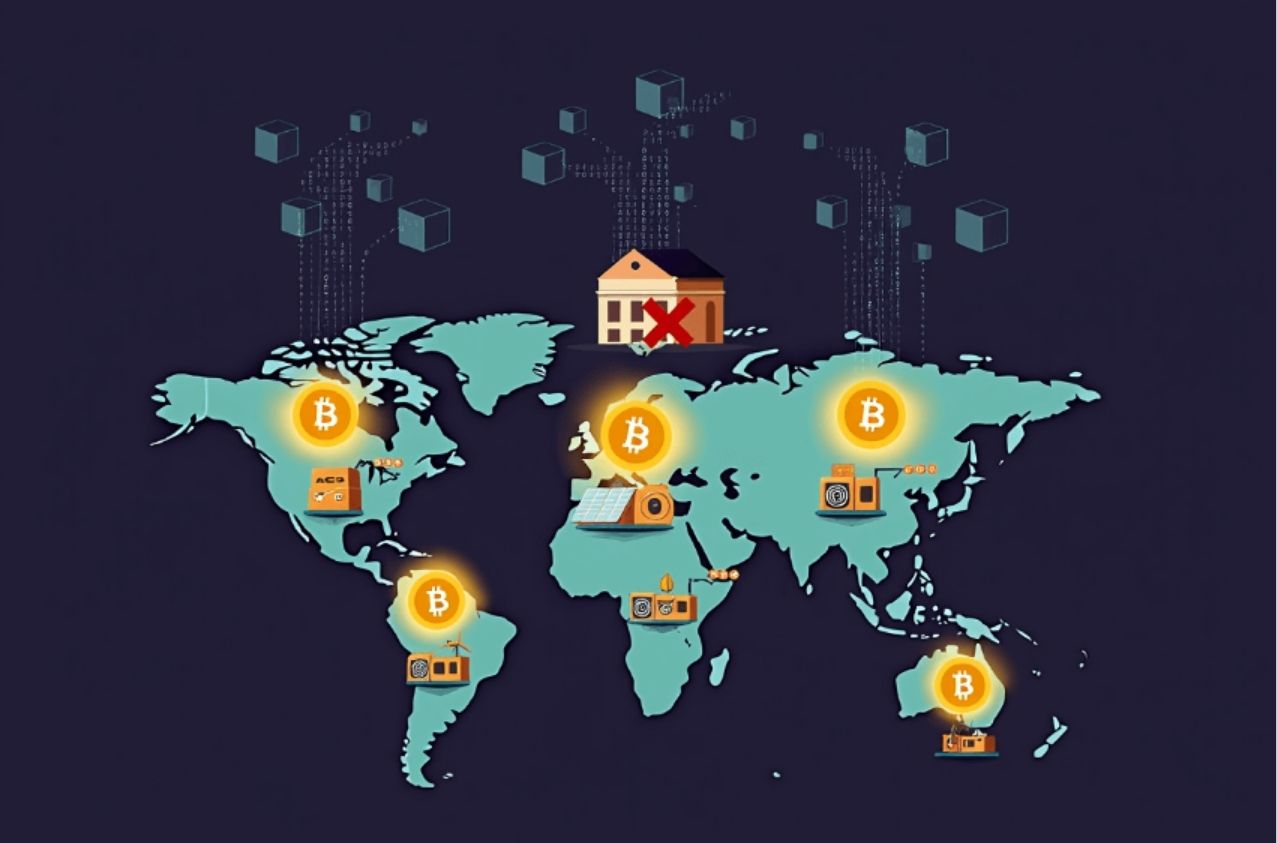
However, mining activity tends to cluster in regions with cheap electricity and cool climates, factors that help reduce operating costs.
In the past, China dominated global mining due to its low energy costs. After the 2021 ban, miners relocated to countries like the U.S., Canada, Kazakhstan, and Iceland.
These mining farms operate globally, and no government mints Bitcoin, it’s created by the collective effort of miners across continents.
4. Bitcoin’s code: What’s under the hood?
To truly understand what Bitcoin is made of, we must peek under the hood of the software that powers it.
Bitcoin’s code is open-source and written primarily in C++. It includes several key components that make Bitcoin function securely and independently. Below is a closer look:
- Cryptographic algorithms: Most notably SHA-256, which secures every transaction and block by converting input data into a fixed-length string of characters that’s nearly impossible to reverse-engineer. This ensures the integrity of the blockchain.
- Proof-of-work protocol: This mechanism dictates how miners compete by solving complex math problems. It prevents double-spending and secures the network through a consensus mechanism based on computational effort.
- Consensus rules: These rules define what makes a block valid. All participants follow the same rules, ensuring synchronization across the decentralized network without relying on a central authority.
Together, these components make Bitcoin resilient, censorship-resistant, and transparent, key properties of a decentralized digital asset.
This software isn’t hosted on a central server, it runs across tens of thousands of computers globally, ensuring that no single point of failure exists. Bitcoin is built on software architecture and community enforcement.
5. Do physical Bitcoins exist?
If Bitcoin is digital, what are those shiny gold tokens with the Bitcoin logo we often see online?
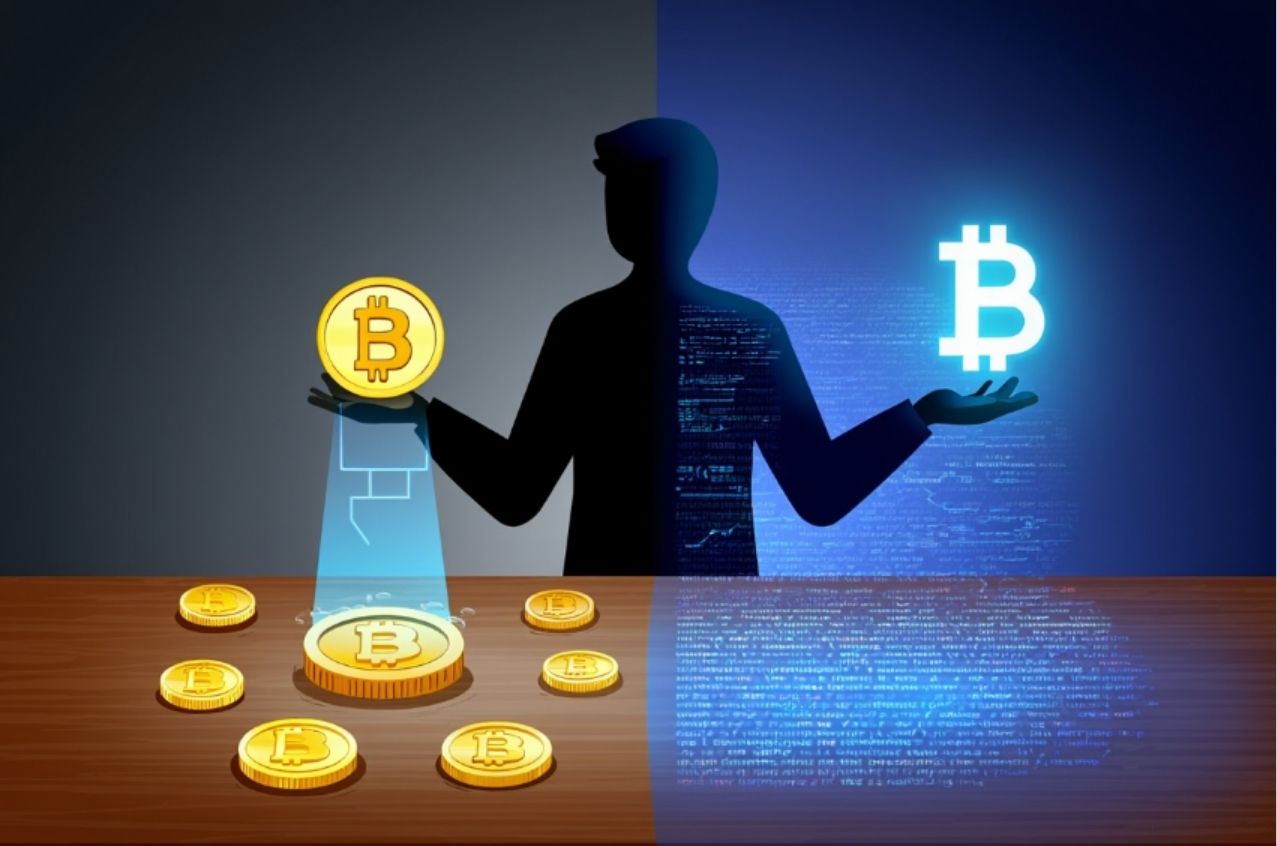
These are physical Bitcoins, often used as collectibles or novelty items. They are not real Bitcoins by default but may contain actual Bitcoin value if properly embedded with a private key.
A notable example is the Casascius coin, created by Mike Caldwell between 2011–2013. These brass coins had a hidden hologram seal containing a private key. When unpeeled, the holder could access real Bitcoin stored on the blockchain.
Other versions include BitBills (plastic cards with Bitcoin addresses) and custom coins from companies like Titan Bitcoin. These are mostly souvenirs or tools for cold storage, not official currency.
Though made of metal or plastic, their true value lies in the cryptographic code inside. Once the code is used (redeemed), the coin becomes an empty shell, reducing its collectible worth.
5.1. What are physical Bitcoins made of?
Let’s dig deeper into the composition of these physical tokens to understand their materials and symbolism.
- Common metals: Many coins use brass or copper alloys. The Casascius coins, for instance, were often made of brass.
- Precious metals: Limited edition coins were minted in silver or gold for added value and rarity.
- Plastic or synthetic: Some tokens, like BitBills, used plastic or even 3D-printed designs for novelty purposes.
No matter the material, these coins are not official government-issued money. They’re private mints housing a digital key, nothing more.
5.2. Are physical Bitcoins worth anything?
Value varies depending on whether the coin still holds Bitcoin or is just a redeemed collectible. Here’s how that works.
If a physical Bitcoin still contains its embedded digital currency (the hologram is intact), its worth includes:
- The value of the Bitcoin inside (on-chain)
- Its collectible rarity, especially if it’s a limited edition
For example, an intact Casascius coin holding 1 BTC can fetch hundreds of thousands of dollars depending on the Bitcoin price and collector demand.
If the coin has been redeemed (hologram peeled), it’s just a souvenir, its value drops dramatically, often below metal cost.
Ultimately, real Bitcoin value exists on the blockchain. Physical coins are niche items for collectors or symbolic gifts, not true currency.
View more:
- What date is Bitcoin halving? Everything you need to know for 2025
- How many Bitcoins have been lost forever?
- How do I buy Bitcoins with a credit card? [2025]
6. Can Bitcoin be stored in a physical way?
While Bitcoin itself isn’t physical, users often wonder how it can be stored securely without being exposed to hacks. This is where cold storage comes in, a method of keeping your Bitcoin access completely offline. Here are some popular solutions:
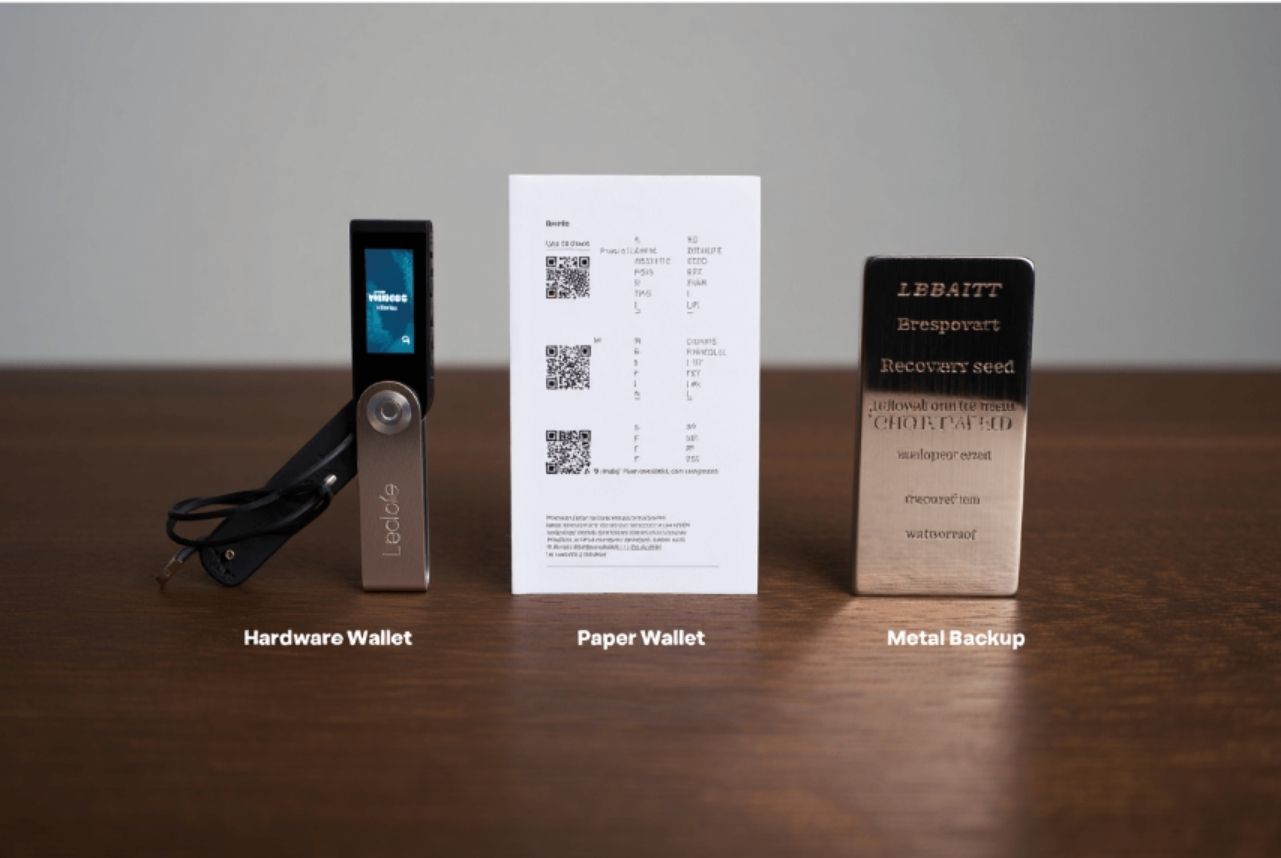
- Hardware wallets: Devices like Ledger or Trezor securely store your private keys offline, disconnected from the internet. These USB-like devices provide top-tier protection against online threats.
- Paper wallets: A paper wallet is a physical document containing your public and private keys. Although low-tech, it’s highly secure if stored safely, as it never touches an online system.
- Metal backups: These are laser-engraved or etched steel plates containing your wallet’s recovery seed phrase. Fireproof, waterproof, and corrosion-resistant, they serve as a durable backup against disasters.
These methods don’t store the Bitcoin itself, but rather the credentials to access it. In essence, they make the intangible more secure through tangible means, crucial for security. In this way, the digital can be made tangible for protection.
7. Is Bitcoin made of nothing?
One common criticism of Bitcoin is that it’s made of nothing. Critics often argue that without physical backing, Bitcoin lacks real value. But that assumption misses the core of how decentralized systems derive trust and utility. Let’s break it down:
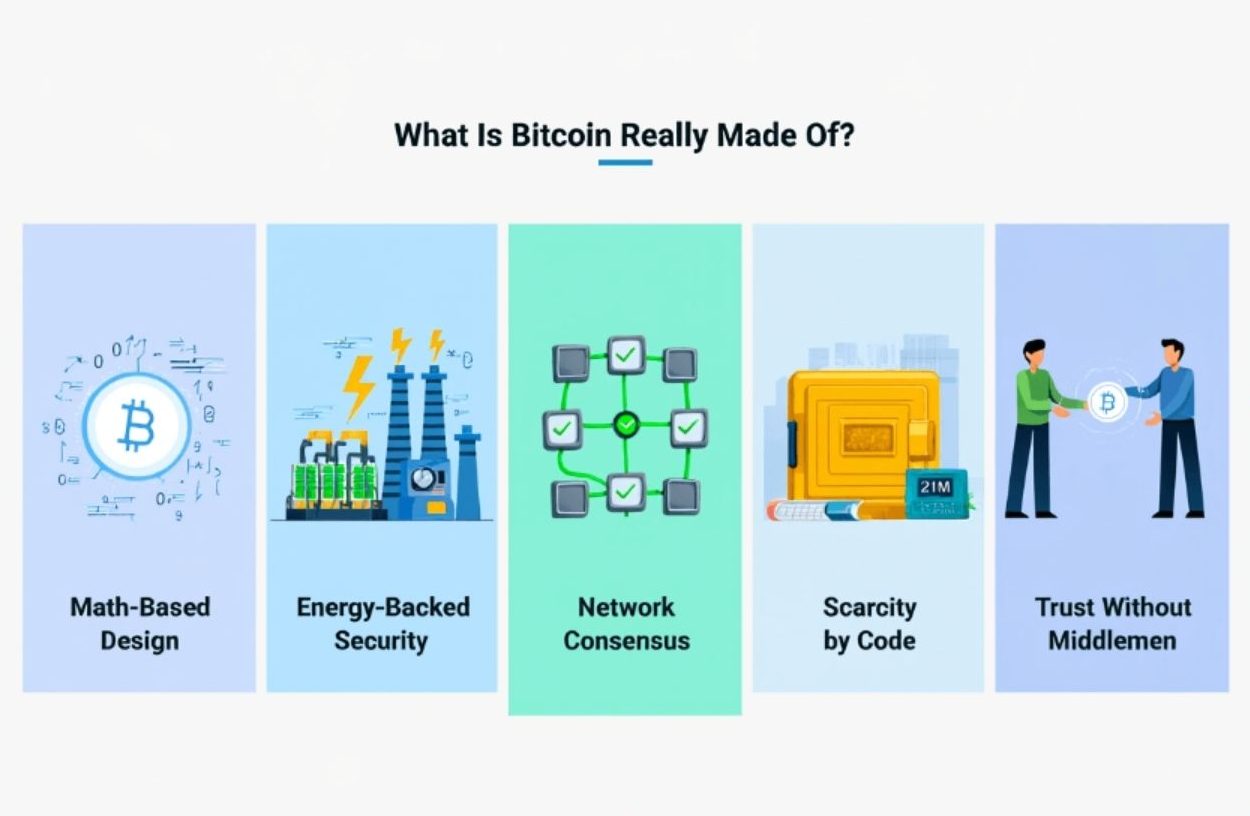
- Mathematics: Bitcoin runs on immutable mathematical principles. The algorithms behind its structure are proven and predictable, offering a foundation for trust without middlemen.
- Electricity: Bitcoin mining consumes real-world energy, creating scarcity and security. The effort put into mining is what gives each coin a provable cost of production.
- Consensus: Unlike fiat currencies governed by central banks, Bitcoin relies on network consensus. Every node verifies transactions, creating trust through decentralized validation.
- Scarcity: With a hard cap of 21 million coins, Bitcoin mirrors the rarity of gold. This scarcity plays a central role in its market-driven value.
- Trust: Millions trust Bitcoin, not because of what it’s made of physically, but because of what it represents: freedom, security, and decentralization.
Pro tip: Just like email isn’t made of paper but still delivers messages, Bitcoin isn’t made of gold but still transfers value. Its true strength lies in its architecture, not its appearance.
So, while Bitcoin isn’t made of atoms, it’s built on concepts that are just as real, and sometimes even more powerful.
8. FAQs
Many new users ask questions like how do you redeem a bitcoin or how to sell BTC safely. In this section, we cover all those concerns.
Q1: Is bitcoin a physical object?
A: No, Bitcoin is not physical. It’s a digital currency that exists only on the blockchain.
Q2: How is bitcoin created?
A: Bitcoin is created through mining, a process where computers solve complex algorithms to validate transactions and earn new coins.
Q3: Can you touch or hold a bitcoin?
A: No. You can only interact with it digitally through wallets and exchanges. What you might see in photos is a symbolic representation.
Q4: Are physical bitcoins legal?
A: Physical Bitcoins are collectibles. Some may contain private keys but are not legal tender. Projects like Casascius were discontinued due to regulatory issues.
Q5: Do physical bitcoins have real value?
A: Yes, if they still contain Bitcoin and are unredeemed, they hold both digital and collectible value.
Q6: Where are most bitcoins mined?
A: Bitcoin mining is global but tends to concentrate in regions with cheap electricity like the U.S., Canada, Kazakhstan, and Iceland.
Q7: What is the best way to cash out Bitcoin without high fees?
A: Scarcity (21 million limit), security (blockchain tech), decentralization, and user trust give Bitcoin its value, not physical composition.
9. Conclusion
Still wondering what are bitcoins made of? In truth, Bitcoin is not composed of metal or paper, but of code, mathematics, cryptographic algorithms, and the consensus of its decentralized community, not paper or metal.
It exists purely in the digital realm, recorded on the blockchain and created through the process of mining.
From its creation via complex computations to its decentralized global network, Bitcoin’s structure defies physical norms. Though physical Bitcoins exist as novelties, they don’t change the fact that Bitcoin itself is a digital currency.
What gives Bitcoin value isn’t what it’s made of, but how it works, its limited supply, and the belief millions of users place in its technology.
- Bitcoin is a digital currency created through decentralized mining.
- It has no physical form and is built from software, cryptography, and consensus.
- Physical Bitcoins are collectibles, not the real thing.
- Its value comes from scarcity, utility, and community trust.
Whether you want to redeem Bitcoin for USD or just understand how do you redeem bitcoin for cash, Bitcoin’s structure remains the same: digital, decentralized, and code-based.
Vietnam-UStrade brings you these insights to help navigate the world of crypto. Explore more in our Bitcoins category, learn how to protect your holdings in Crypto investing, and follow us for future updates.





